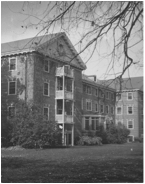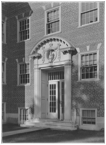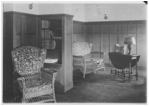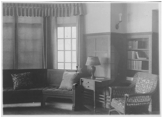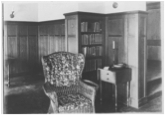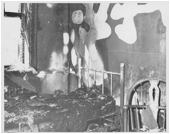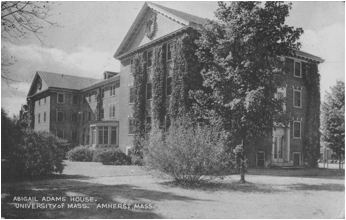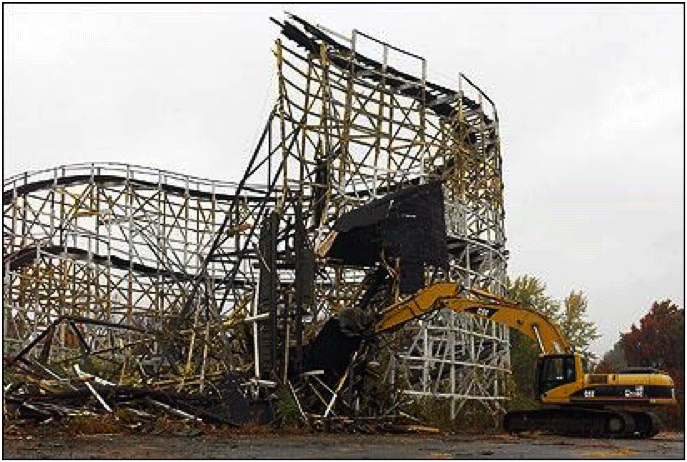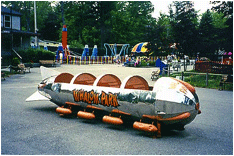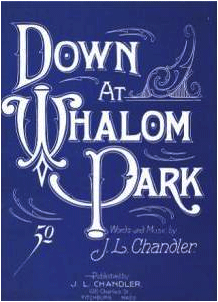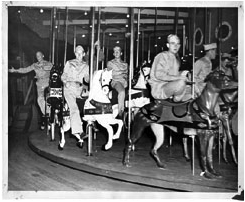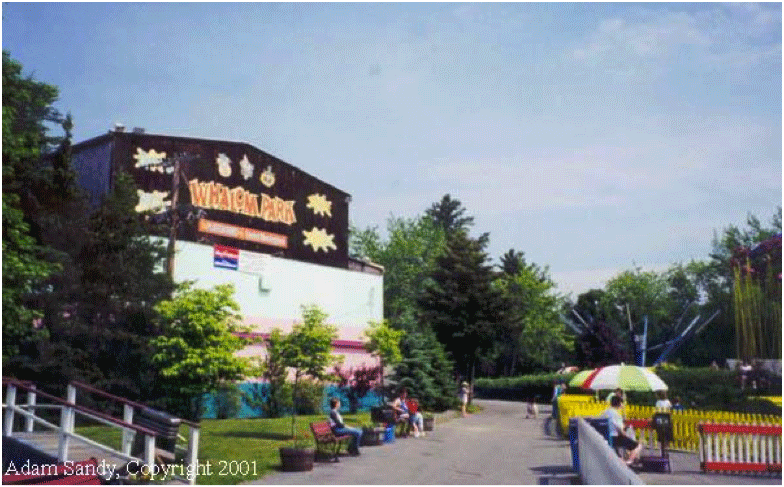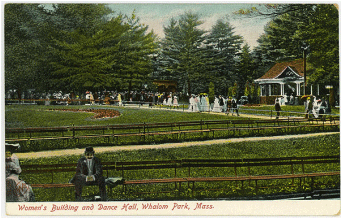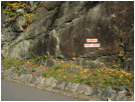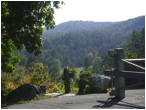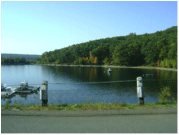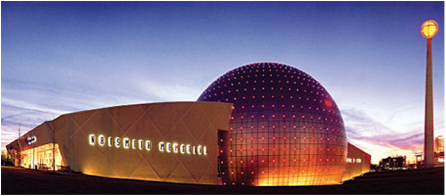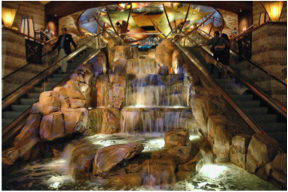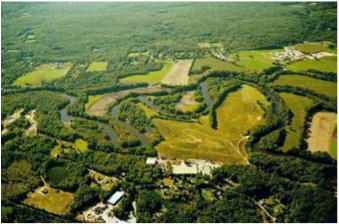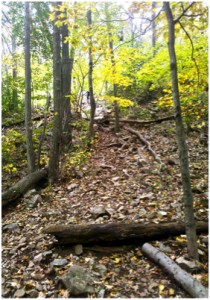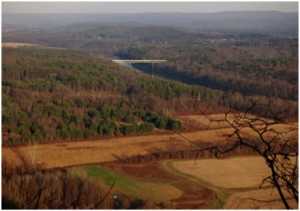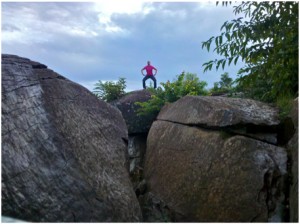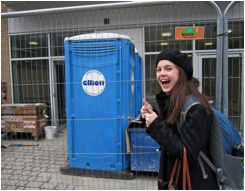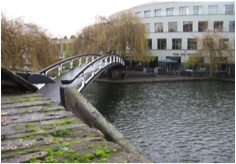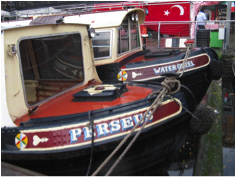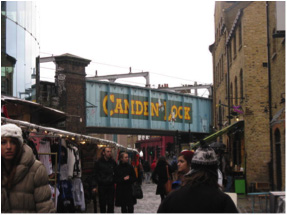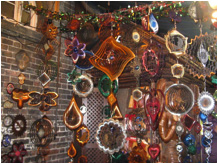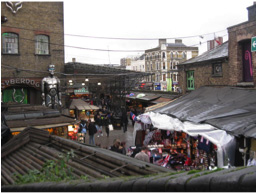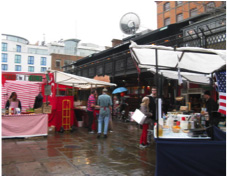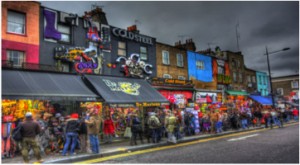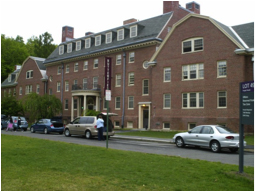By Amy Laprade.
“Wow, Mom. Cool. I can definitely see its potential,” I exclaimed as she led me up the stone steps to an enormous colonial house, in the shape of a bracket. It was a faded, brown-grey, suggesting the first hints of dry rot on the outside, with splashes of white paint here and there that resembled scabs.
Mom brushed the newly fallen snow from her stone steps and let me in through the side door, on the south side. We stepped into a brightly lit kitchen with a high-peaked ceiling and a pot belly stove. In the corner, to my left, was a pantry with an electric oven tucked deep in its corner. According to Mom, the pantry had once been a walk-in freezer when the house had been the original Academy at Charlemont, a privately funded, college preparatory school. Though while the Academy thrives to this day, its original location, this house, was abandoned for a modern building along Route 2, back in 1981.
The house was originally built in 1880 by the Duprey family of Charlemont Massachusetts. It’d been a two-family house until around1981, when it was sold by Burt and Evelyn Duprey to David and Patricia McKay, two of several founding members of the Academy who took six boys and six girls as their boarding students.
The kitchen floor, warped with age and sloping heavily along the western wall, was accented by a large window to the north, consisting of many sections of old, rippled glass. Outside, beyond the snow bank, cardinals lighted on a bird feeder, which dangled from an ancient crab apple tree. Beyond, muted forrest surrounded the property of 8.8 acres on all sides, except the north, which boasted a view of a meandering pot-holed road, which ran parallel to a rolling horse pasture, before vanishing into the hills of Jacksonville Vermont.
“I love it.” I held my gaze out the window a moment longer, watching snow flurries whisper from out of the December sky.
Mom shrugs. “Your sister was like, oh, Mother! What a dump! She was right. It needed a lot of work. The ceiling was full of holes from all the broken water pipes. Before we got the new panelling for the living room ceiling, I feared something would fall from among the pipes and land on my head. It was really creepy in here, especially after having been empty for nine years. The previous owners, the McKays, moved out of state, after the Academy relocated. They couldn’t handle the expense of keeping the house heated. It got so cold in the house that the pipes burst. Still, Marty and I got a really good deal on the house, and it’s in the country, which is all I wanted.”
I scoped out the place while Mom hung her new curtains. I was home from San Francisco for the holidays, and not only was excited to see snow again, but couldn’t wait to see ‘the house.’ For my mother, who, having lived in a trailer for ten years, this was like owning a mansion, even if the linoleum in the kitchen was warped in some areas and peeled, thus exposing plywood, in others. It was an estate even if it did have faded, sooty wall paper from many years of smoke from the wood stoves.
I entered the dining room, and then the living room where I was greeted with cheap, brown, industrial carpeting and Gilbert, Marty’s brown and black-spotted beagle, who bounded off the sofa, wagging his tail and howling as though I were his long lost pal. His clammy nose brushed my hand as if he were signaling for me to follow him deeper into the old house.
We passed a small bathroom with antique-looking rose patterned wall paper and a glass doorknob and through the living room where we entered another large room, which looked like a parlor with long, rectangular windows. There was yet another pot-bellied, wood stove. Through the archway and to the left was a hall that led to a small bath with a claw tub and pedestal sink. The large staircase at the start of the corridor dominated what used to be the house’s main entrance.
I pondered which way to go next, and decided to go straight ahead, through a heavy, modern-looking door that was missing its knob. It swung shut behind Gilbert and I, leaving a chilly breeze. The narrow hall was devoid of light and clammy, and its carpeting smelled vaguely of wet sock. A tiny ray of sunlight escaped through the crack of the first door to my right. I entered another bathroom, only this one had two sinks, two toilets, two shower stalls, and looked modern compared to the rest of the house. On my right, a small bedroom with a window facing north, toward the horse pasture, would later become my room, for indefinite stays, and would later have lavender walls and a silver-framed mirror over a small, vintage dresser. Across the hall was the door to the basement. Ahead was another door which opened onto another hallway with three more rooms off the side, thus comprising the north end.
I heard thumping and banging sounds under the floor. Gilbert began to whine. Perhaps Marty is in one of these rooms, I thought. I stepped into the room on the left. No one was there. It was cluttered with plastic lawn furniture, a roll away wardrobe, and an unprecedented amount of odds and ends stuffed into cardboard boxes. Of all twenty-four rooms I’d either just explored and had yet to explore, this one made me feel uneasy. I wasn’t scared, per say. Just a little uneasy. It felt as though it had a presence. There wasn’t anything exceptionally eerie about the room, except that it felt colder than the other rooms and had one window, placed at an odd angle–as though it were slumping toward the corner of the room, toward the closet, rather than standing erect and centered, the way windows are in newer houses. Nevertheless, it faced West and had a view of the crabapple tree and of the woods beyond.
It had a decent-sized closet. The door squealed when I tugged at the glass door knob. The smell of old plaster tickled my nose as a slit of darkness met my eye. I stared dumbly at the gaggle of wire hangers. Yep. Just a closet. But then my eyes adjusted to the dark and I noticed a small door. It didn’t have a knob and was more like a panel in the right side of the wall. I pulled it out and discovered a narrow staircase that, to my amazement and disappointment, vanished into the ceiling.
“The Academy closed it off so the girls wouldn’t sneak down to visit the boys at night,” Mom later explained.
A loud crash, omitting from the floor below, sent Gilbert bolting to the basement door. Marty was fiddling away with the water heater, but invited us to come down to have a look. The ceiling was so low, coming down the steep wooden steps, I had to duck or I’d have hit my head.
The floor was made of hard-packed clay and was damp. Hand made beams, cut from old growth trees, fused together with hand cut iron nails, supported the house, and ran parallel to the frenetic artery of heating ducts and sewer pipes. Cobwebs dripped from the single, naked bulb, hanging from the pull chain–the only light the basement provided, as there were no windows. It stunk down there, too. Like something died.
“That’s our next project. Sealing up all the holes. A skunk found its way into a crack in the wall, of the basement cellar, never found his way out, and died.” Marty explained as he pushed a step ladder against the stone wall. Above the top of the ladder was a dark, rectangular hole. I watched with curiosity as Marty scrambled up the ladder and shined his flashlight in. I wondered if he was checking for skunks, then wondered warily if anything else, besides skunks had ever found their way in.
“What’s that?” I pointed to the rectangular hole.
“You know, Amy. I don’t really know. It’s a crawl space. It starts here, runs underneath the wall of the dining room and along the length of the kitchen, where it comes out in front of the door. I crawled through it once, trying to instal lights there, in case the pipes should burst again.”
Mom would later tell me that there was a longer, larger trap door, under the floor in the southwest corner of the dining room. Gilbert refused to go anywhere near that corner of the room. Mom thinks that it may have been used as part of the underground railroad and that the house is haunted.
Leaving Gilbert with Marty, I went to scope out the upstairs. To the top of the landing was a wrap around hall way, corralling the stairwell. I followed it and came out into a room filled with taxidermy deer and fox, gazing at me from their blank, glassy eyes.
A door, on the other side of the room, opened on another hallway. To my left was another bathroom, identical to the one downstairs, with: two showers, two sinks, and two toilets. To my right was a narrow door that led to an enormous attic filled with bat droppings. From the landing, another door opened onto this northern side of the upstairs and onto a row of dormer rooms which were to the left and the closets to the right. This section is where the Academy’s girls were housed.
I retraced my steps, following a different hallway, just outside the attic staircase. I came upon two more doors, opened one and ended up in another room. There was yet another hidden door in the back of its closet. A stench of must and mothballs wafted out upon opening the panel. In the pale lighting, coming from the west window was a hidden staircase, and the back way to the attic.
A hunger pain stabbed my stomach and I could hear Mom calling “Amy?” from somewhere in the house, but when I stepped out of the room I became confused when I ended up in a whole other hallway, I hadn’t yet seen. Across the hall was another bedroom that overlooked the road and faced east. To my right, through the archway, was another whole apartment with a living room and kitchen on the south facing side.
I began to wonder how many more rooms there were in this house as I made my way back down the hall. On my way, I noticed yet another bathroom on the left. It wasn’t one of those funky double-of-everything bathrooms, but just a bathroom with an antique, pedestal sink, with a faucet with knobs made of porcelain and had rust-streaks around the drain. The walls were a delicate shade of periwinkle.
I wanted to check my hair, but the mirror was missing. It looked as though there’d been one there at one time, because I could see the silhouette of a rectangle among the tobacco-stained wall. And there were holes and cracks in the plaster where screws had been. It looked as though the previous owner had carelessly yanked it out of the wall.
“Amy?” I heard Mom call again, and Gilbert’s muffled barks.
I returned the way I came and ended up in the hallway by the attic door again. Then I went back through the side room again which led me to that hallway and back to the apartment. It was then that I noticed another staircase to the left of the bathroom that I hadn’t noticed before, because it was dark and narrow. I made my descent, and came out into the downstairs living room where I’d started out. Gilbert was waiting at the landing with my favorite socks in his maw.
“Coffee’s ready, Ame.” Mom sat a steaming mug for me on the stand.
“I almost got lost up there.”
Mom laughed. “I almost did too, my first day here.”
“There’s a whole other living quarters above us,” I said in amazement, taking a seat on the ottoman.
“That was where the staff lived. The Academy added on the extra kitchen, extra living room, the two double-showered bathrooms, and the dormer rooms.”
“So then. What happened that they stopped using the house?”
“The Academy thought that the boarding house would turn a big profit. The opposite happened. It became too costly to house kids. And they grew tired of babysitting the students, who really trashed the place. Ripping the wall paper off of the walls….plus the insurance and the food the Academy had to provide, just proved too much. So, the Academy closed the house.”
“There’s something up there. A vibe, Ame. I don’t know. But the first night I spent here, I was sound asleep on the living room floor, in my sleeping bag, when I heard a really loud crash from upstairs. It sounded like glass shattering. At first I thought it was a break in. Then I thought it was maybe one of the animals, but then thought, ‘that’s not possible,’ because Gilbert was still at the trailer with Marty and the two cats were sleeping in the living room with me.
“When I went upstairs, I found glass all over the floor in that bathroom,” Mom points at the ceiling, indicating the one I’d just been in with the porcelain faucet handles and periwinkle walls. “The mirror had fallen off the wall and shattered. But you know the strange thing is that there weren’t any shards in the sink. They’d all landed two feet away from the sink, in the middle of the floor. And one, very large shard of glass, triangular in shape, stood poking out of the linoleum in a perfect upright position. I mean, it wasn’t as though the mirror simply fell from the hook in the wall. If that were the case, don’t you think that there’d be glass in the sink?”
“Well, I mean, it could be that….” My voice faltered as I began to think about the barren space on the wall, framed in tobacco smoke. “I don’t know.”
Work Cited
Judith O’kulsky, personal communication, 1995, 2012.




